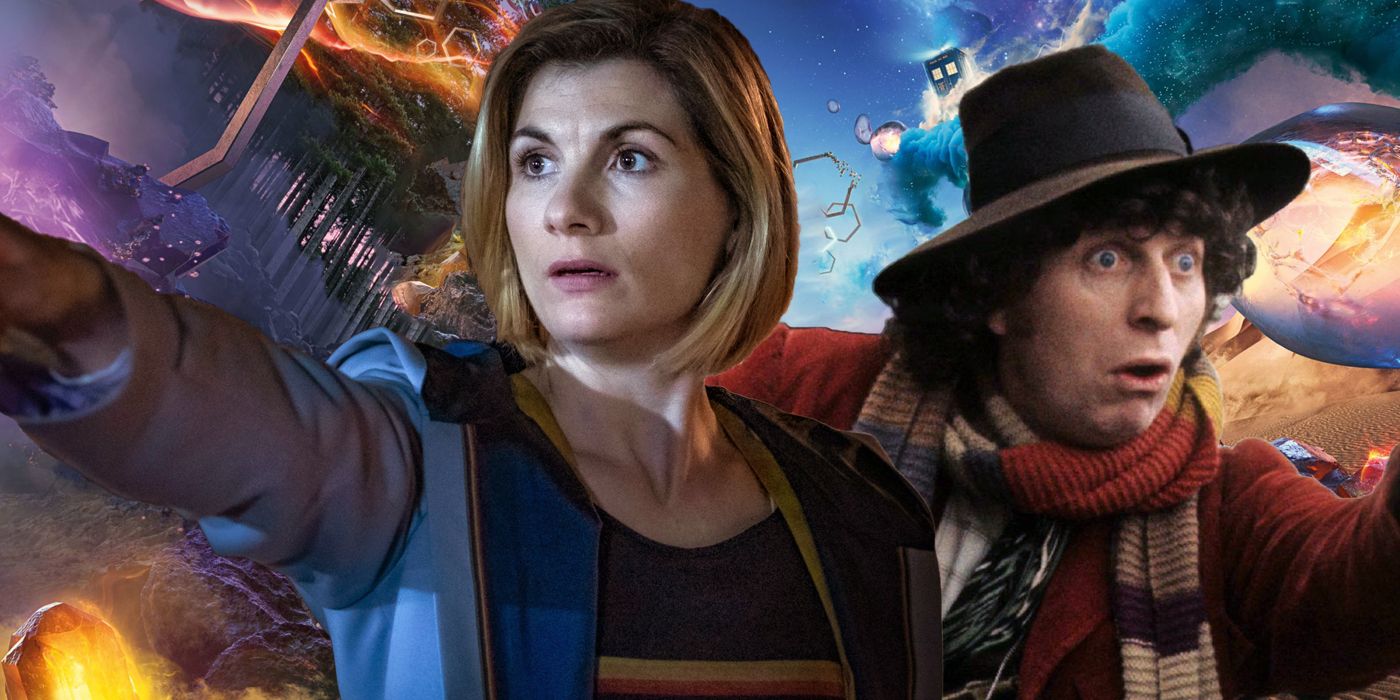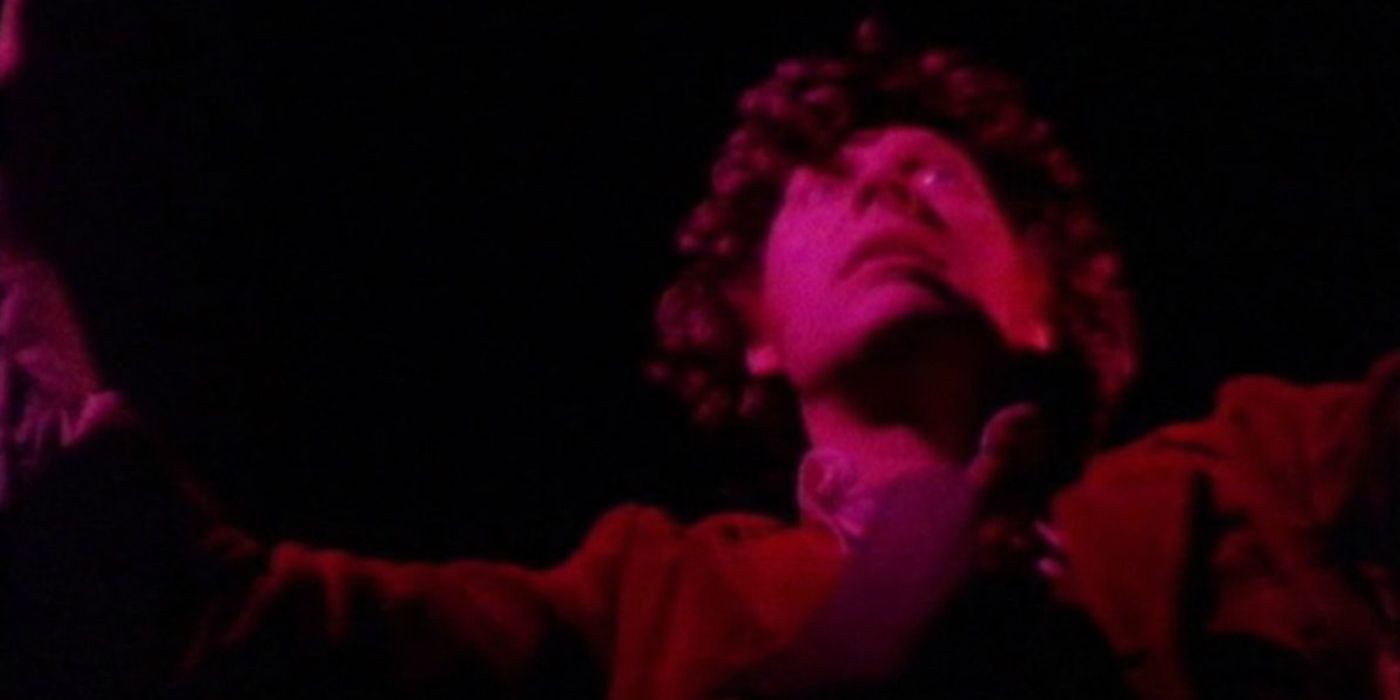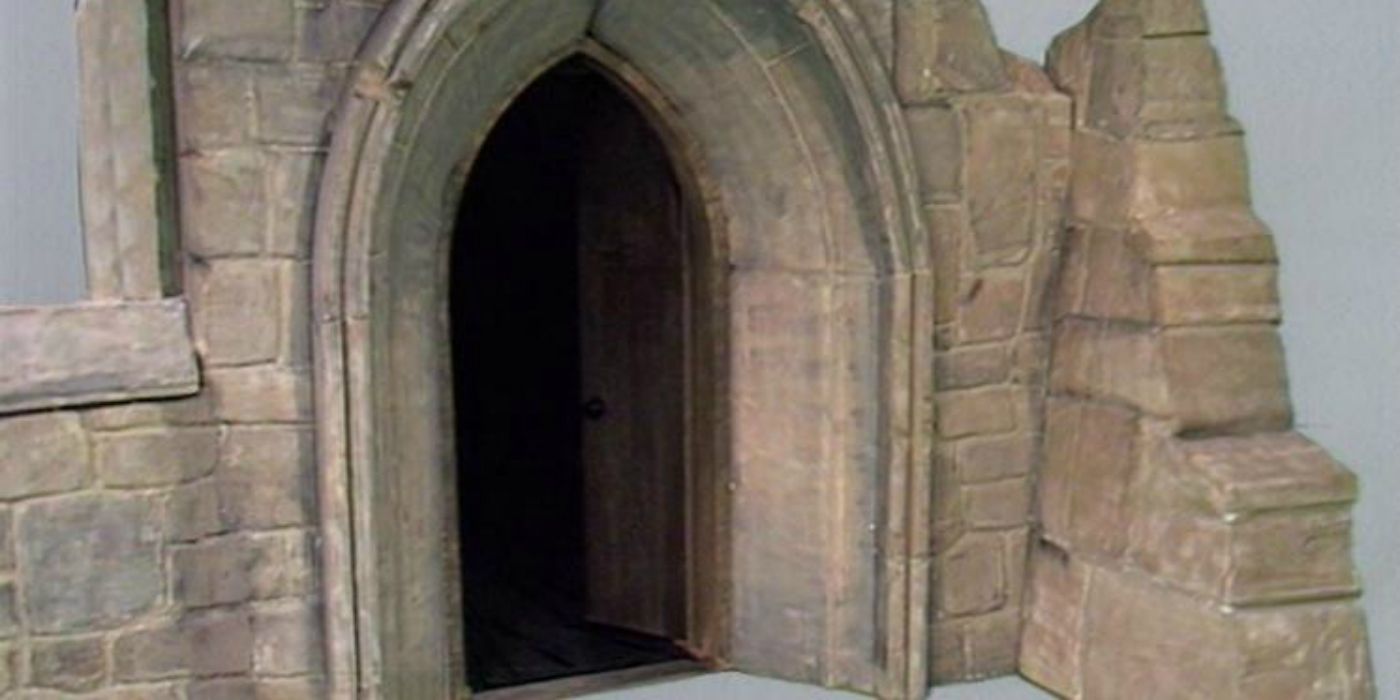The origin of Doctor Who's Timeless Child was actually set up in the Tom Baker era. Showrunner Chris Chibnall certainly can't be faulted for lack of ambition; the Doctor Who season 12 finale rewrote the show's entire history. It revealed the Doctor is the Timeless Child, the base genetic code of the entire Time Lord race. She was found by an ancient Gallifreyan explorer named Tecteun, and seems to have emerged from a mysterious rift in reality known as the Boundary. "Tecteun glimpsed the infinite through that gateway," the Master observed, "and beneath the monument she found - a child."
The Doctor's memory was wiped by the Time Lords, and she has forgotten an unknown number of previous regenerations. Amusingly enough, this fixes an apparent plot hole from the Tom Baker era. In the story "The Brain of Morbius," the Doctor engaged in a psychic battle with another Time Lord; his past was projected on a viewscreen, including eight unknown faces. Producer Philip Hinchcliffe confirmed he intended the scene to indicate there had been past Doctors before William Hartnell.
But the Tom Baker era doesn't just contain what can be retconned as a hint of the Timeless Child. Another story, dating back to 1977, also sets up the Boundary - and further suggests the Doctor is more than just a Time Lord.
Planet of Evil Revealed A Boundary To Another Universe
"Planet of Evil" saw the Doctor and his companion travel to the planet of Zeta Minor, the last world in the known universe, some 30,000 years in the future. There, the Doctor discovered a dying race called the Morestrans, who were attempting to harness the power of Zeta Minor in order to restore their fortunes. He soon learned Zeta Minor was "the boundary between existence as you know it and [another] universe," one composed of antimatter. "From the beginning of time," he explained, "it has existed side by side with the known universe. Each is the antithesis of the other. You call it nothing, a word to cover ignorance, then centuries ago scientists invented another word for it. Antimatter, they called it." According to the Doctor, Zeta Minor was an almost-living planet situated between these two universes. It was possible to travel between the universes by diving into an apparently bottomless pool.
The Doctor seemed entirely comfortable with the idea of other universes; while he viewed the Boundary as an unusual phenomenon, he spent most of the story attempting to tell the Morestrans the truth about Zeta Minor. Furthermore, he understood it was dangerous to transport matter from one universe to another - to the extent he feared the Morestrans could accidentally annihilate the universe by attempting to do just that. In one intriguing scene, the Doctor suggested he travel into the other universe and negotiate a ceasefire; "I'm not entirely without influence," he observed cryptically. He was right, promising the antimatter creatures to return all samples of antimatter. Sarah Jane queried if he meant his promise as a Time Lord; rather than reply, the Doctor avoided the question.
"Planet of Evil" takes on a new significance in light of the Timeless Child retcon. It establishes the precedent for Boundaries between one universe and another; this Boundary was a particularly dangerous one, but presumably the Doctor's universe of origin wasn't an antimatter realm. It further hints the Fourth Doctor may have been aware of his true origins, given he avoided confirming to Sarah he had given his promise to the antimatter creatures as a Time Lord. This fits with comments from the Seventh Doctor's era in which he admitted he knew he was "more than just a Time Lord."
Warrior's Gate Sets Another Precedent
Later stories saw the TARDIS actually travel through something called a "Charged Vacuum Emboitment," which served as a portal to another universe called E-Space. These CVEs were the rarest of space-time events, occupying the space between realities. They had been artificially created by the mathematicians of Logopolis, and were used to prevent the heat death of the universe by allowing energy to escape. In "Warrior's Gate," the Doctor finally discovered another structure - dubbed the Gateway - that allowed him to return to the normal universe. This had not been constructed by the Logopolitans, but rather by beings from E-Space.
This, again, is important setup for the Timeless Child retcon. When the Master showed the Doctor her true origin in "The Timeless Children," he presented her with a Matrix vision of the moment Tecteun discovered the Boundary. It was situated above a monument of unknown origin, a structure that reached to the heavens. This may well correlate with the Gateway, suggesting this Boundary too was constructed by an ancient race - perhaps the Doctor's true people.
-
Chris Chibnall is an old-school Doctor Who fan, so it shouldn't really be a surprise his retcon fits well with subtle hints and clues dropped in the classic series. What is more remarkable, in this case, is that the very concept of a Boundary between universes has already been firmly established as part of Doctor Who lore. More problematic, however, is the fact Jodie Whittaker's Doctor appears to have forgotten the things her previous incarnations knew. When she saw the Boundary in "Ascension of the Cybermen," she had no idea how it was possible; furthermore, she was shaken to the core by the Master's Timeless Child revelations. Indeed, the Master thought he had finally achieved his insane goal of breaking the Doctor once and for all.
There is, however, quite an easy explanation for the mysterious gaps in the Doctor's knowledge. Regeneration tends to shuffle the neurons; in fact, it's quite common for the Doctor have trouble recalling events from a previous incarnation. Notice that, in "The Timeless Children," the Doctor began her mind blast against the Matrix by accessing her own immediate memories - and then her recollection of previous Doctors seemed to blur together. It's therefore entirely possible - indeed, probable - that some Doctors remembered more about their true origin than others. That would explain Baker's cryptic reluctance to confirm he had given his "promise as a Time Lord," as well as McCoy's insistence he was "more than just a Time Lord." Presumably in Whittaker's case, the knowledge had been lost completely.



